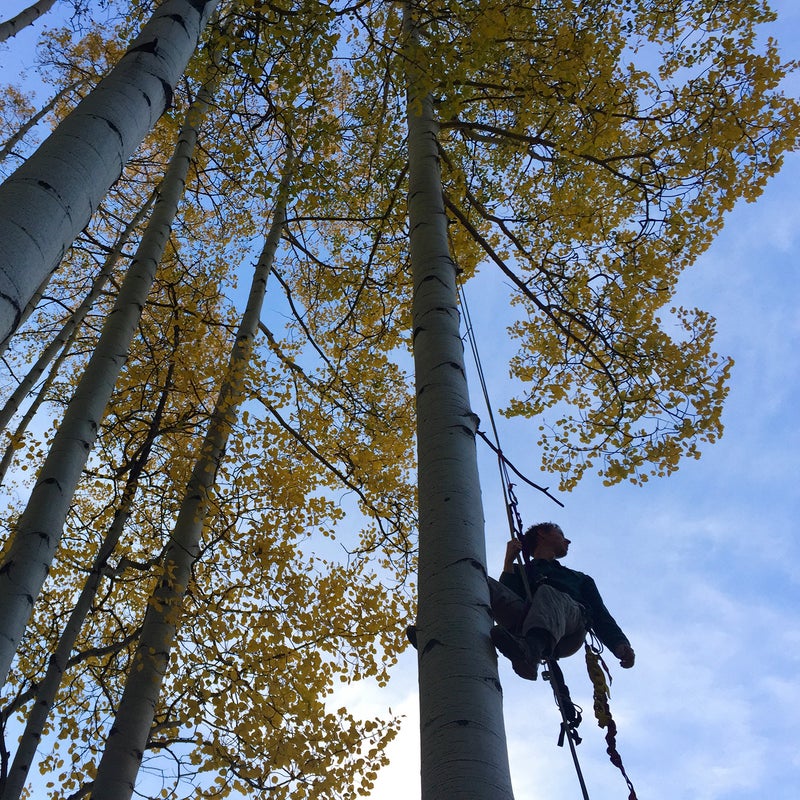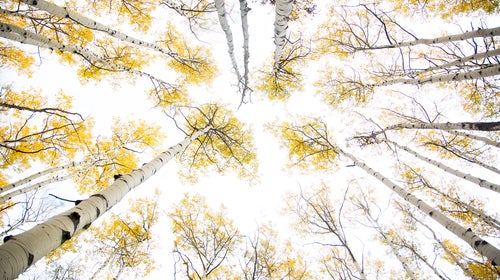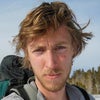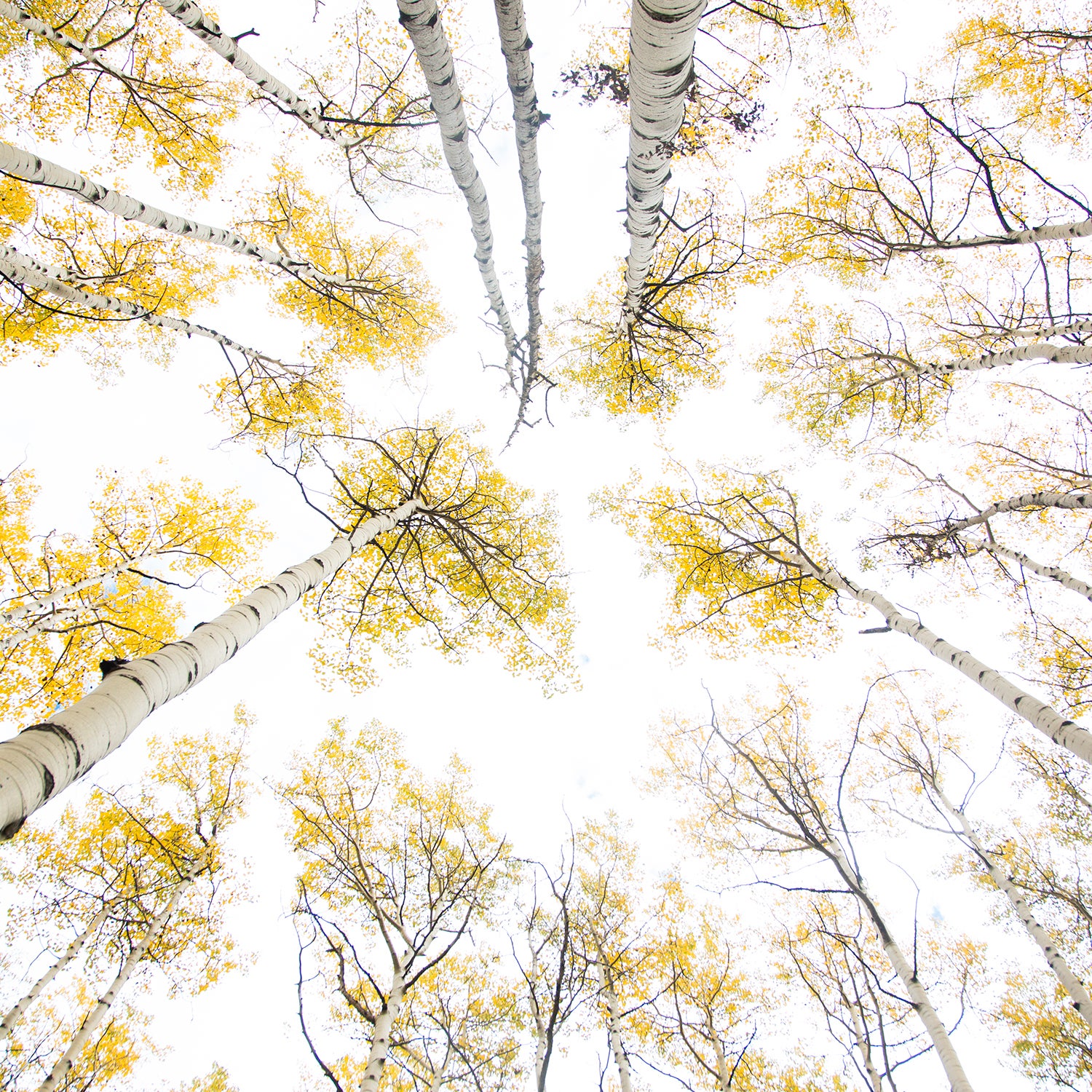I was born and raised in Vermont, in the glory of maples. Driving to Colorado in 2004 for my freshman year of college, not only was I feeling the general ache of leaving home, but I was also dealing with the specific sorrowÔÇöworse than saying goodbye to Ma and PaÔÇöof missing the hardwoods and their phantasmagorical foliage. What have the Rockies got to offer? Blue spruce? Dark, brooding firs? Little did I know.
My first weekend in the West, a classmate and I cruised into the high country without an agenda, ending up on Kebler Pass, a dirt road that links the small mountain town of Crested Butte with the even smaller mountain town of Paonia and, en route, weaves through some of our planetÔÇÖs largest, oldest organisms. Populus tremuloides, the quaking aspen, grows in clonal colonies, which means each stem in a grove is genetically identical, connected by an immense underground root system called a rhizome. A few hundred miles away, in UtahÔÇÖs Fishlake National Forest, the (a.k.a. Pando, Latin for ÔÇťI spreadÔÇŁ)╠řis estimated to weigh 13 million pounds and cover 100-plus acres. NobodyÔÇÖs sure of the exact stats on the mosaic of Kebler groves in the Gunnison National Forest, but researchers suspect they could be bigger. From what my friend and I observed that stunning September weekendÔÇöa wash of gold extending over entire mountainsides, an infinity of leaves, untold groves blending and blurring to yonder horizonÔÇöIÔÇÖm pretty well sold.
That astounding arboreal vision inspired a dream, a fantasy, a crazy idea that IÔÇÖve been unable, or perhaps unwilling, to shake. What happens when you hike for hours, eschewing map and GPS, intentionally losing yourself in the labyrinth of an ├╝ber-tree, a megabody? What happens when you pull a hammock out of your pack, rig it 30 feet off the deck between two pale, chalky branches, and ease into the lazy daze of an autumn afternoon? What happens when, having dozed off, you wake at dusk to coyotes howling and woodpeckers drumming and deer browsing the ferny understory? Do you realize, in an instantaneous epiphany, that these animals, like you, are akin to the mites and other microcritters that reside on a humanÔÇÖs eyelashesÔÇöthat you are all so tiny, so very tiny? Does your mind explode from the joy of this realization, from the bliss of being grasped by such hugeness?
These are not rhetorical questions. At least they donÔÇÖt have to be.
Hammock, sleeping bag, foam Thermarest padÔÇöcheck. Harness, carabiners, extra slings, Prusik loops, ATC for rappellingÔÇöcheck. Coil of disconcertingly abraded rope donated by a buddy who actually understands knots and anchorsÔÇöcheck. Dubious skillset but enough grit and gumption to (hopefully) get the job doneÔÇöcheck-a-frigging-roo! Quasi-prepared, I stepped from the dusty Kebler Pass road╠řon a recent September morning and, at long last, entered the sun-shot intricacies, the shade-dappled mysteries, in search of the perfect hanging campsite.
About that search. I learned technical tree climbing in ArizonaÔÇÖs ponderosa pines while employed by the Forest Service on a demographic study of northern goshawks. (Nab the nestlings, lower them in a sack to the ground crew, wait for measurements to be taken and blood to be drawn, haul the nestlings back up.)╠řTypically, my boss used a hunting bow to fire fishing line over a beefy limb, lifted a strand of parachute cord with the fishing line, lifted a static rope with the parachute cord, then gave me the nod. Mechanical Petzl ascenders were important, and a scuffed red helmet was reassuring, but ultimately the beefy limb made everything possible. Limbs of this type abound on pondos. Not so much on aspens.
Bushwhacking south from Kebler, I was rewarded with╠řsightings of a dozen squirrels, a great horned owl snoozing on her midday roost, a sweet mossy boulder facing a sweet mossy creek, and precisely zero beefy limbs within my limited reach. Alas, I donÔÇÖt own a crossbow, slingshot, or potato cannon and was thus dependent on a skinny biceps and an iffy sidearm to launch my gear into the canopy. Furthermore,╠řI refused to settle for just any ├╝ber-tree, just any two-bit, run-of-the-mill megabody.

According to a Forest Service ╠řon aspen ecology,╠řÔÇťThe members of a clone can be distinguished from those of a neighboring clone often by a variety of traits such as leaf shape and size, bark character, branching habit, resistance to disease and air pollution, sex, time of flushing, and autumn leaf color.ÔÇŁ This final trait was my guideÔÇöcolor. I didnÔÇÖt pretend that the trip was a legit expedition tasked with discovering and accurately delineating a Kebler version of the Trembling Giant, but I did know from experience that certain groves remain green well into late fall, whereas others pop their gold early. A casual visual survey, I figured, ought to steer me directly into the heart of a particularly woolly botanical beast. And thatÔÇÖs what I desired.
I eventually found my quarryÔÇöfound myself stumbling around inside it, giggling and gleefully swearing, neck cranedÔÇöa few hours before sunset. White columns scratched black with bear-claw calligraphy. Stout pillars supporting a gilded ceiling reminiscent of ornate church domes in Venice and Rome. A thousand stems, 10 thousand stems, 10╠řbazillion stems! I would have liked to make a rough tally, pace a perimeter, jot notes, but the slanting light and chill in the air insisted otherwise. Nerdy citizen science could be postponed until tomorrow. I had to empty my pack, sort my tangled equipment, review the art of the Prusik hitch, and commence the shitshow.
Er, the safe and methodical climb. Yes, thatÔÇÖs right. Safe and methodical.
Jack Turner, in his book , writes,╠řÔÇťIÔÇÖve always wanted to hang a hammock high in an aspen grove and live among the leaves.ÔÇŁ This coming from a member of the elite Exum Mountain Guides, a grizzled alpinist who has spent decades in the Greater RangesÔÇöthe astonishingly epic landscapes that youÔÇÖd assume would render relatively dinky Western deciduous forests boring. But no, the murmuring, vibrating, mesmerizing aspens compel our attention in a way that icy slopes and soaring granite buttresses cannot. For the aspens are aliveÔÇöthey╠řare, in the case of Kebler Pass, a vast encompassing life. Those ethereal zones above treeline, albeit thrilling and savagely beautiful, present us with the heavens, not the homey earth. (Recall that our primate ancestors sought refuge from marauding predators in the forest canopy, and that allure is likely coded into us at the cellular level.)
I thought about this once the awkward, arduous battle (twigs in the hair, fumbled Nalgene, wild flailing galore) was complete and, whew, I was suspended in my nylon aerie. Far from comfortably suspended, due to the harness I planned to wear all night and the severe wedgie it caused, but suspended nonetheless. A couple stories above the ground. Sweat drying. Spiders keeping me company, traversing invisible filaments, playfully mocking me with their graceful mobility.
And I thought, too, of about giant sequoias that I read in the New York Times Magazine back in 2017, not long after Trump became president. The author, Jon Mooallem, made the point that it was a good moment for humility and perspective-taking in America, and for that reason he was embarking on a pilgrimage to encounter lives older and grander than his own. While I applaud MooallemÔÇÖs initiative, a part of meÔÇöthe part that swayed, that gazed, that reveled in the exuberant smother of hues and textures and tones, the riot of receding chlorophyll, the dendritic complexityÔÇöfeels the need to amend his notion, to push it further. The Kebler aspens dwarfed me, indeed, but better yet they left me with a sense of embeddedness and immersion, a sense of how habitat holds us. My tentative hypothesis is that the average outdoorsy personÔÇÖs love of nature has less to do with scenery and sporty fun and whatnot than it does with being embraced by the world. Locating a niche, a place within the broader place. Appreciating the wilderness that surrounds and sustains.
Peanut butter sandwich for dinnerÔÇöcheck. Airplane bottle of Scotch for dessertÔÇöcheck. Baby in a crib, cozy and drowsy, his fancy ecosophical thoughts hushed by the lullabye of a leaf-rustling breezeÔÇöcheck-a-frigging-roo! My heavy eyelids closed and opened, closed and opened. Drifting at the edge of consciousness, I delighted, despite the persistent wedgie, in the image of stars through foliage, a glittering universe beyond cracks in the ever-shifting crown.
And then, seemingly a mere 15 minutes having passed, the dawn chorus roused me, warblers and nuthatches flitting around my head, perching beside my toes. My spine was kinked. Frost had silvered half my sleeping bag. I pounded a cold instant coffee, dismantled camp, and rappelled.
Not out of something, but deeper into something. Call it Populus tremuloides, the ├╝ber-tree, the megabeing. Call it whatever you please.


